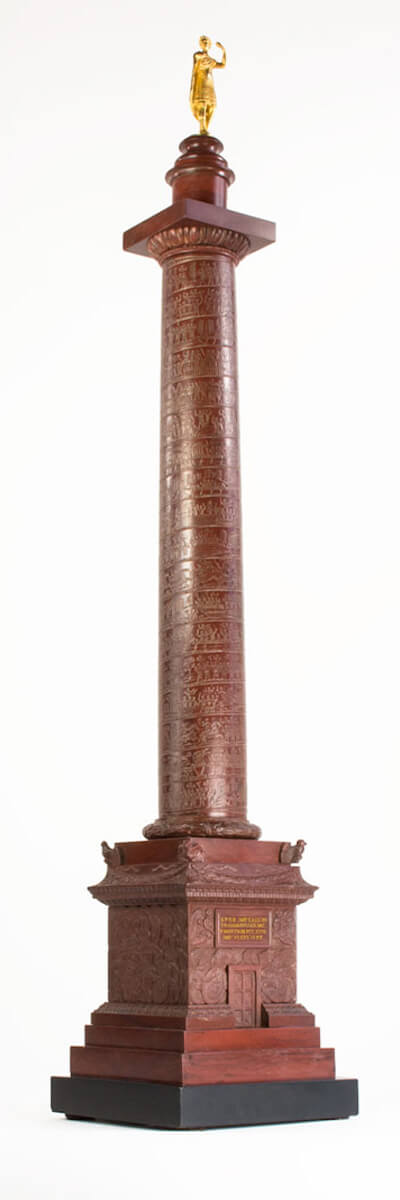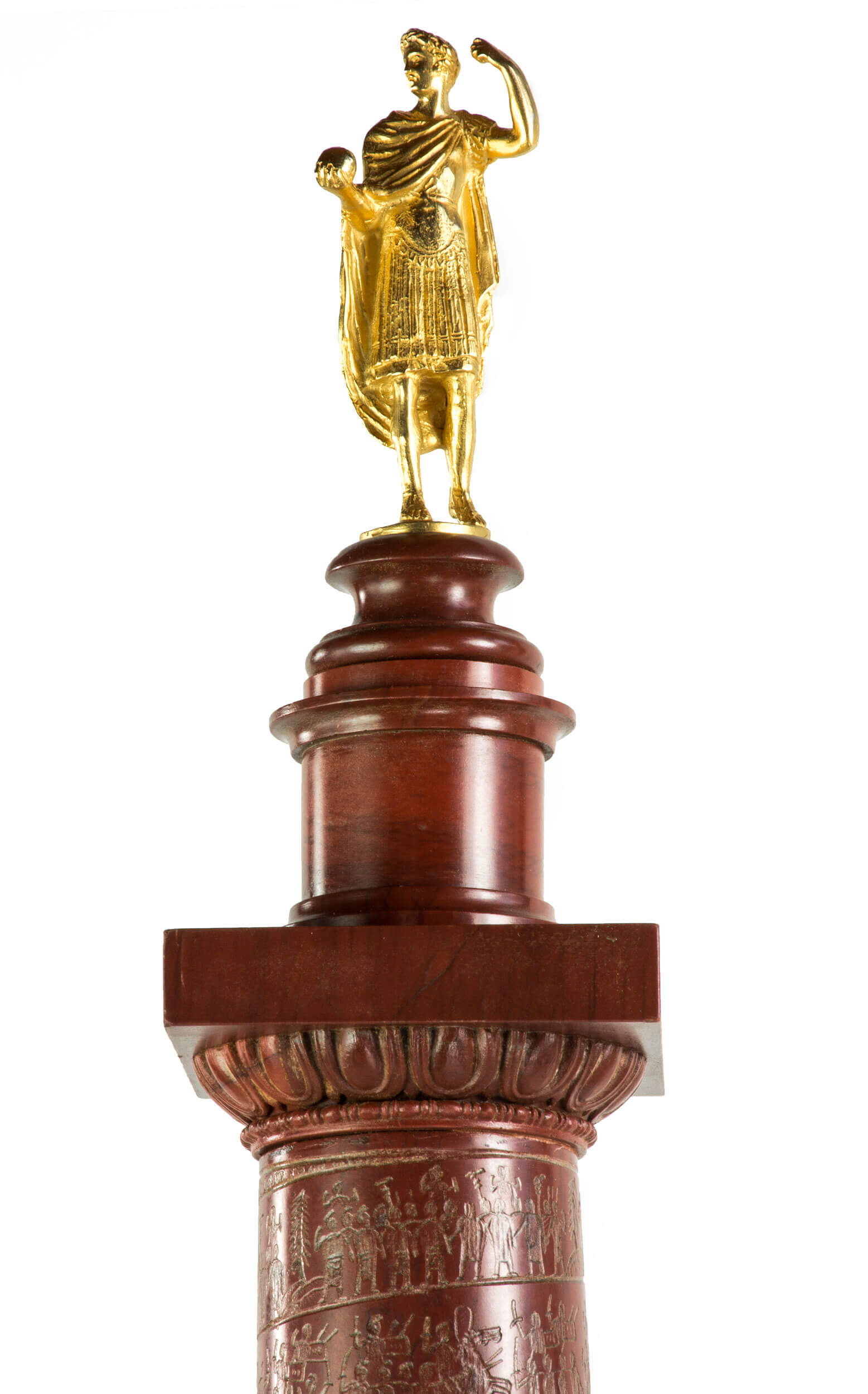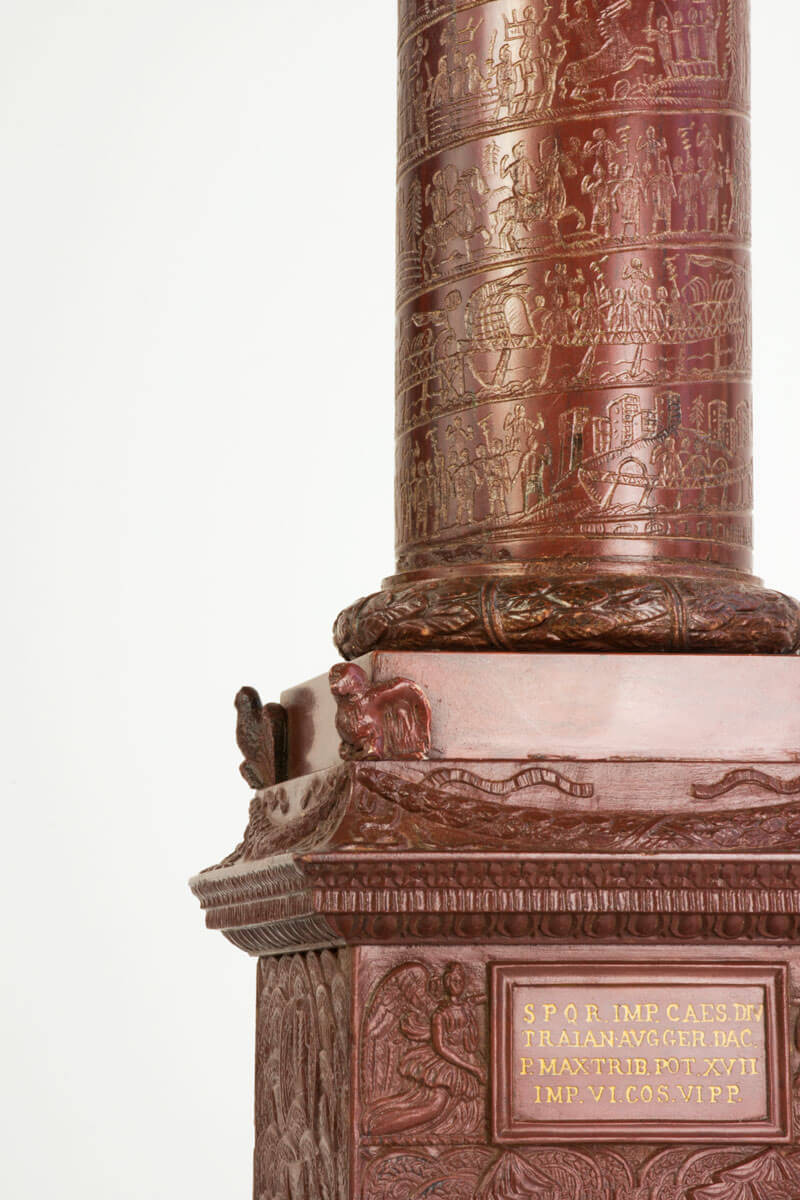
Trajan’s Column, Rome
Trajan’s Column, Rome
Rosso and Nero Antico marbles, gilded bronze figure
1830’s, 34″ h.
- Literature
- SFO Airport Museum, All Roads Lead to Rome, (2017), illus. pp. 6-7.
- Exhibition
- SFO Airport Museum, All Roads Lead to Rome: 17th-19th Century Souvenirs from the Collection of Piraneseum, January 24-August 13, 2017
This impressive, precisely-carved marble model of Rome’s Trajan’s Column is the finest and largest
we’ve yet found. Carved with consummate skill, note the surpassing detail, especially at the base. This
includes even the inscription (a bit abbreviated) above the doorway, which is first carved, then filled
with a yellow-gold paste.
The shaft’s spiraling decoration (also slightly abridged) is a high-fidelity portrayal of the Emperor’s
subjugation of the Dacians. At the monument’s summit, the ormolu figure of Hadrian is exquisitely
wrought. It seems likely that this bronze mount and others seen on the variety of Roman architectural
marble models in this period were made outside the stone carvers’ workshops. In this city, in the first
part of the 19th century and earlier, there were a variety of capable bronze studios.
As usual, the figure of Trajan atop this column portrays the monument as it existed in antiquity, not as
it existed in the first part of the 19th century (or today), with a Baroque era figure of St. Peter ruling the
roost.
The rosso and nero antico marbles from which this model is made are, as the names suggest, antique,
which is to say that they were originally quarried in the time of Augustus at the edges of the Roman
Empire. After serial sackings, the Eternal City was awash in brightly-colored, ruined marble, which provided
the material for souvenirs (and much else) for a thousand years.







